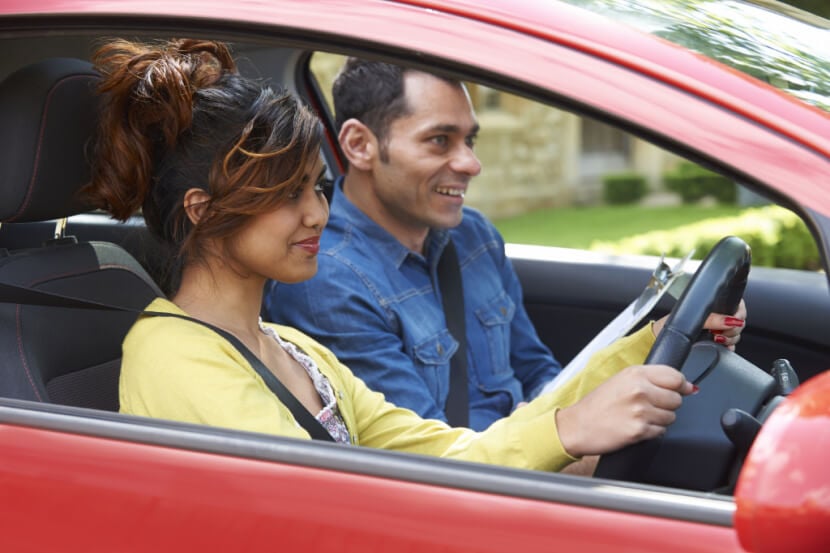Do you prefer using your own car while learning to drive? The good news is that you can take your driving test in your own car if it meets certain rules.
Many choose to take the test in their instructor's car, but there's no rule that says you have to. We'll look at the pros and cons of using your own car on your practical driving test.

Why use your own car for the driving test?
There are a number of positives to using your own car on your driving test:
-
It's your car, so you're used to driving it. You know where all the controls are and you know exactly where the clutch bites.
-
You spent hours practising manoeuvres in it so you know exactly where the back end is when you're reversing.
-
Your seat and mirrors should be perfectly set for you.
-
Your car is always available so you can be more flexible with test dates
-
If you use your instructor's car you'll need to pay them to use it.
Comfort should be one of your main priorities as your prepare for your driving test.
It might be that some of the above points are true when driving your instructor's car, instead of your own. In which case, you could agree with your instructor to use their car for the test instead.
What are the rules on using your own car for a driving test?
If you want to use your own car for your driving test, you'll need to make sure it meets a few conditions.
First off, your car must have valid car tax that's in date when you take the driving test.
You need car insurance too. Check with your insurer that your policy covers you for your practical test.
In terms of roadworthiness, your car must have a valid MOT and the tyres must have legal tyre tread depth. Your car must be a category B vehicle able to achieve 62 mph and have 4 wheels.
It's not mandatory, but it's worth moving any rubbish out of your car and giving it a good clean and tidy. It never hurts to create a good first impression!
Extra requirements for driving test cars
On top of the basic requirements, you'll also need to prepare your car so it's 'test ready'. For your practical test, you'll need to ensure your car has:
- The car must have L plates on the front and back.
- An extra interior rear-view mirror for the examiner (you need to buy one of these)
- The car must have a passenger seat belt and fixed head restraint for the examiner
- If you've got a dashcam it must not record audio or video inside the car during the driving test
Are some cars not allowed for the driving test?
Yes. Certain cars aren't suitable for taking your driving test in. This is because certain cars may obstruct the examiner, affecting their all-round vision from the passenger seat.
Some of these cars include:
- BMW Mini convertible
- VW Beetle convertible
- Smart Fortwo (2-door)
- Ford KA convertible
- Toyota iQ
Regardless of your car, you should check with the test centre or the DVSA that you can use your car for the test. This is especially the case with convertibles, panel vans and coupes.
You're also not permitted to use a car that has known safety faults. The exception to this is if you can provide proof that the problem is rectified and the car is now safe.
What insurance do I need to take my driving test in my own car?
If you've been learning to drive in a friend or family member's car then you probably have learner driver insurance. This covers you to practice in your friend or family members car while you learn and should also cover you for your driving test.
Temporary learner car insurance is another option. This gives you short-term cover for as little as 1 hour to 28 days.
But before you book your test it's always best to check the terms of your policy in case there are any restrictions.
Does my driving instructor need to be in the car when I take my driving test?
The ball is in your court whether you'd prefer to have your instructor with you during your driving test or not. If you feel like they can bring you reassurance, you can ask them to sit in the back during your driving test.
Just bear in mind, your instructor may charge you for their time. It's even more expensive if you want to use their car to take your driving test.
Does my car need to have dual controls for the driving examiner?
No, you don't need dual controls in your car to take your driving test unless you're using a hire car.
In fact, they aren't mandatory for driving lessons either, but most driving instructors choose to have them.
After all, their car is their livelihood, and dual controls probably give them a bit more peace of mind!
Do I need to tell the test centre if I want to use my own car?
No, you don't need to tell the test centre beforehand if you want to use your own car, but it must fulfil all the requirements for a driving test car.
If it fails to meet the standard, or is found to be unsuitable, your test is immediately cancelled and your money isn't refunded.
Can I take my driving test in an automatic car?
Yes. But if you take your driving test in an automatic car you can only get a driving licence for automatic cars.
You aren't able to drive a manual car unless you take another driving test, this time in a car with a clutch and gearstick.
Compare learner driver insurance

